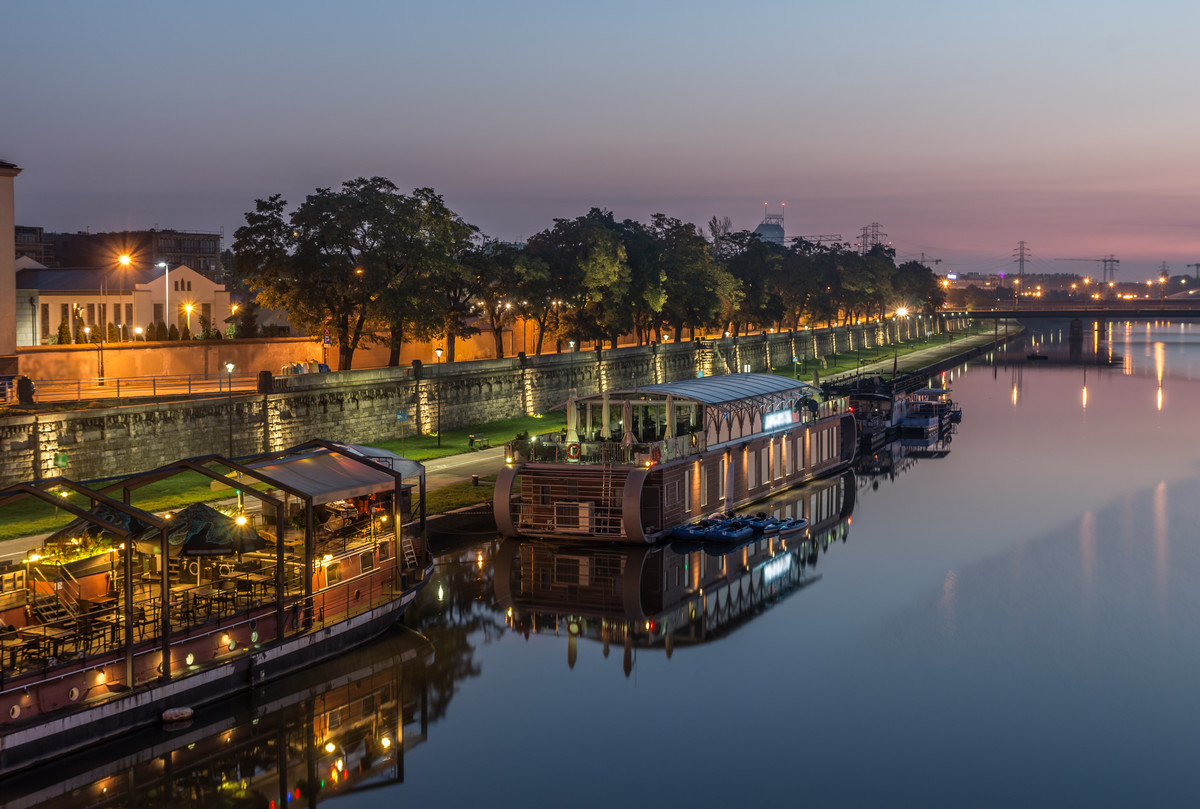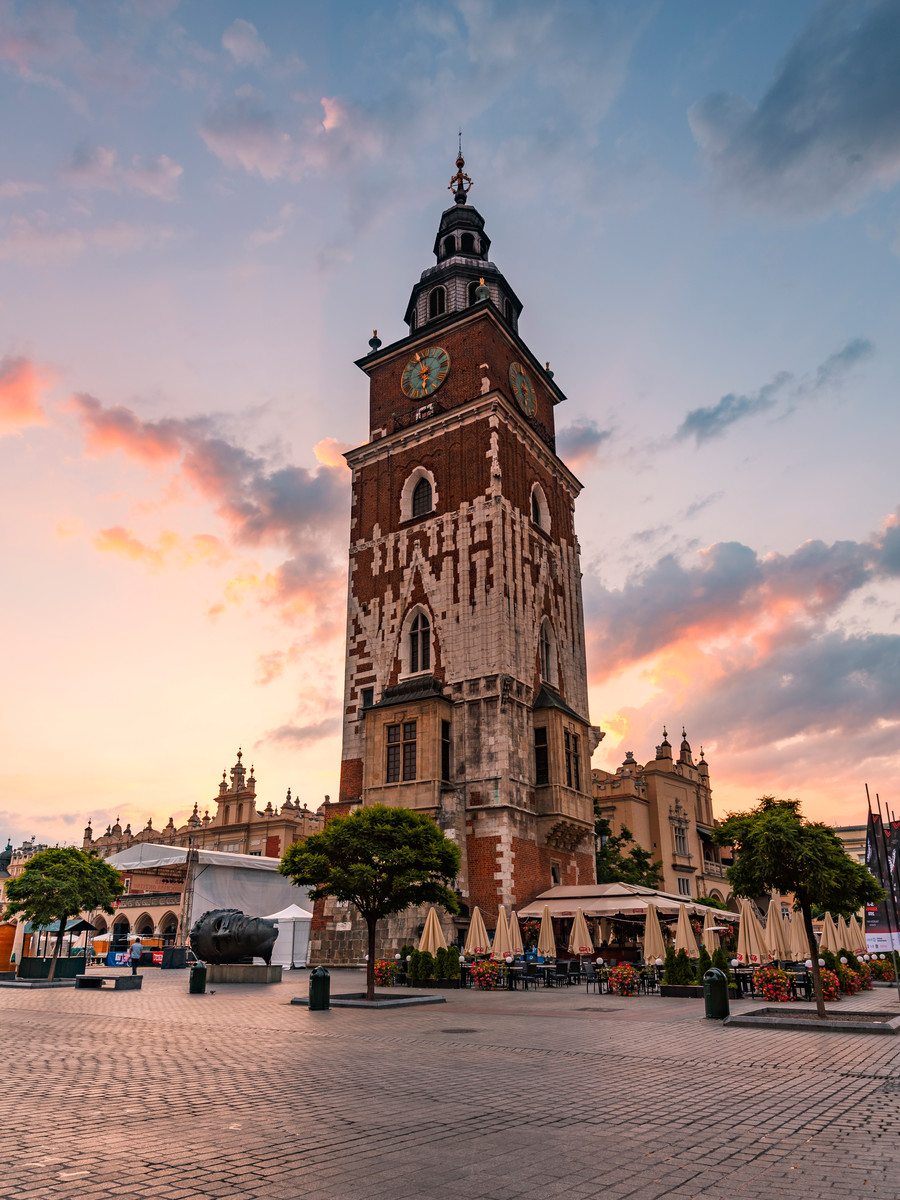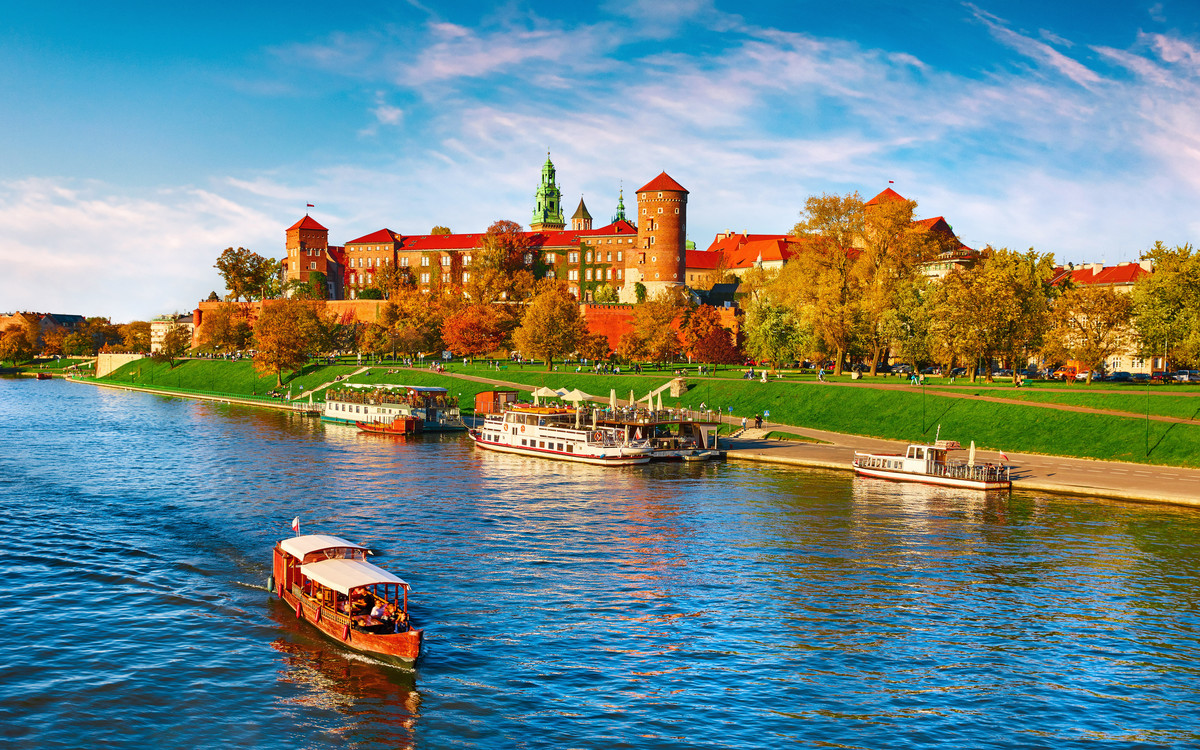LONDON: To visit Kraków is to step back in time — forget all the headlines about populist politics and increasing intolerance, and stroll straight into Poland’s regal past.
First settled in the 7th Century, Kraków served as the center of Polish political life from 1038 to 1596, when King Sigismund III Vasa shifted the action to current capital Warsaw. But the delightful city space he turned his back on still stands today — a magnificent mélange of colorful, teetering townhouses, towering Gothic spires and spacious cobbled plazas.

Vistula River. (Shutterstock)
UNESCO agrees. The entire 370-acre Kraków Old Town was one of the very first sites to earn the tourist gold of a World Heritage stamp back in 1978, and we may have the world’s largest cultural organization to thank for its upkeep; the congestion-free cobbled streets remain both easily and pleasantly navigable on foot today.
Explorations should begin, naturally, at Rynek Główny — the largest medieval town square in Europe — a 9.4-acre sprawl which has served as the common man’s gathering spot since the Middle Ages. Sitting at its heart is the stately drama of the Cloth Hall, a long, thin slice of Renaissance-style decadence built in 1555, such majesty at seeming odds with its historic role as a gathering place for textile traders.
At the Eastern edge sits the 14th century St. Mary’s Basilica — the most magnificent of many places of worship littering the square’s surrounds — while the Western corner houses the looming, 70-meter Gothic-style Town Hall Tower.

Town Hall . (Shutterstock)
The dozens of cafés spilling out into this sweeping space offer an ideal people-watching vantage and lingering-lunch spot. Local specialties include the obwarzanek krakowski, a pretzel-esque pastry swirl, but you’ll find no trouble dining on a diversity of European flavors in this well-furrowed tourist thoroughfare.
Some of those calories can be breezily burned off by walking south toward the Vistula river and ascending a modest incline to arrive at Wawel Castle, the royal residence built in a stately Italian style by King Casimir III the Great, and the older Wawel Cathedral. With calming vistas, stately charms and a historic museum within the grounds, exploring the pair could easily fill an afternoon.

Wawel Cathedral. (Shutterstock)
For after-dark entertainment, head back toward town and check the listings at the excellent Strefa (www.strefa-krakow.pl), a subterranean local’s hangout programming eclectic live acts a cut above the various jazz-themed tourist spots.
Meanwhile for a dose of daytime culture, cross the Vistula to reach the Museum of Contemporary Art in Krakow (MOCAK), a vibrant world-class exhibition space with a compelling permanent collection of Polish and international voices. Highlights include the Insta-ready “Live Factory 2: Warhol by Lupa,” a life-sized recreation of Andy Warhol’s infamous artist hangout The Factory, a leftover from Polish theater director Krystian Lupa’s award-winning play of the same name.
MOCAK also serves as a chilling reminder of Krakow’s more recent history – sitting on a demolished part of the factory once run by Oskar Schindler. The German industrialist and Nazi party member’s efforts to shield his native employees from the ravages of the Holocaust were famously commemorated in Steven Spielberg’s seven-Oscar-winning “Schindler’s List.” Today, the factory is open to visitors as Oskar Schindler’s Enamel Factory, a sobering space with some moving exhibits and valuable historical perspectives.

MOCAK . (Shutterstock)
How deeply visitors to Kraków choose to engage with the greatest tragedy of the modern age may depend on the kind of holiday they’re after, but it’s impossible to avoid mentioning that the Nazis’ largest concentration camp, Auschwitz-Birkenau, sits just 66km west of Krakow and can easily be visited as a daytrip by train.
This writer chose to make that journey, but it’s impossible to recommend, or discourage, the experience to anyone else. I can’t say I knew what to expect, or expected to feel, or — despite being left profoundly shaken for days — that I felt enough. Because, I realized, it could never be enough. There’s not enough pain or perspective in the world to engage with such unfathomable sorrow, or process such untethered evil.





























